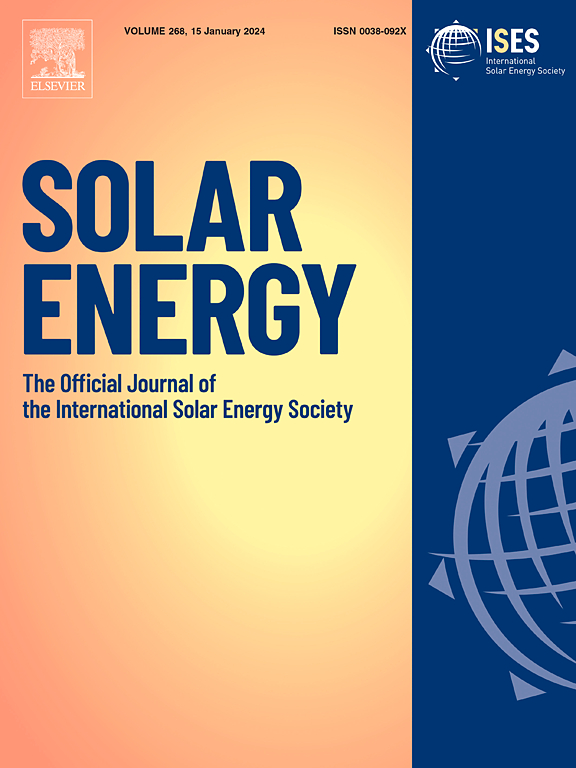将卫星云层透射率预报与物理晴空辐射模型相结合的基于卫星的短期(10 分钟 - 4 小时)太阳辐射预报新方法
IF 6
2区 工程技术
Q2 ENERGY & FUELS
引用次数: 0
摘要
本文章由计算机程序翻译,如有差异,请以英文原文为准。
A satellite-based novel method to forecast short-term (10 min − 4 h) solar radiation by combining satellite-based cloud transmittance forecast and physical clear-sky radiation model
Short-term forecasting of solar radiation is crucial for grid integration of solar photovoltaic (PV) power and for grid scheduling and optimization. Enhancing the interpretability of satellite-based short-term forecasts that rely on artificial intelligence is a research focus. In this study, we presented a novel approach to forecast short-term solar radiation by combining satellite-based cloud transmittance forecast and physical clear-sky radiation forecast. The innovation of this study lies in its foundation on atmospheric physics principles, specifically forecasting cloud transmittance and distinguishing between cloudy and clear skies. The cloud transmittance prediction was conducted based on Himawari-8 observations using widely adopted and well-known convolutional neural network (CNN) and long short-term memory (LSTM) networks, while the clear-sky radiation forecast can be conducted with clear-sky radiation model or prediction based on numerical weather prediction (NWP). Compared to other satellite-based baseline forecasting frameworks, the accuracy of our developed framework for short-term forecasting of solar radiation is improved, with an average root mean square error of about 62 W/m2 over 116 sites and an average relative root mean square error of about 14.36 % with a forecast horizon of 10 min. When the forecast horizon was increased to ranging from 20 min to 4 h, the corresponding average root mean square error increased from 72.16 W/m2 to 159.75 W/m2, and the relative root mean square error increased from 16.71 % to 37 %. This work can forecast solar radiation maps and assist in the flexible regulation of solar PV generation.
求助全文
通过发布文献求助,成功后即可免费获取论文全文。
去求助
来源期刊

Solar Energy
工程技术-能源与燃料
CiteScore
13.90
自引率
9.00%
发文量
0
审稿时长
47 days
期刊介绍:
Solar Energy welcomes manuscripts presenting information not previously published in journals on any aspect of solar energy research, development, application, measurement or policy. The term "solar energy" in this context includes the indirect uses such as wind energy and biomass
 求助内容:
求助内容: 应助结果提醒方式:
应助结果提醒方式:


